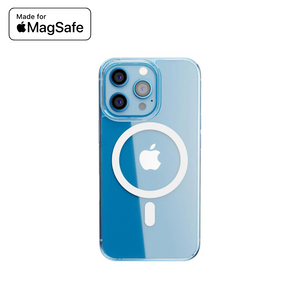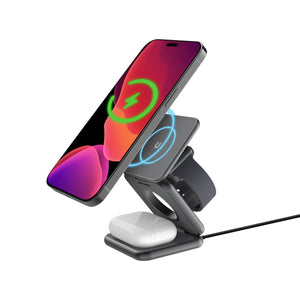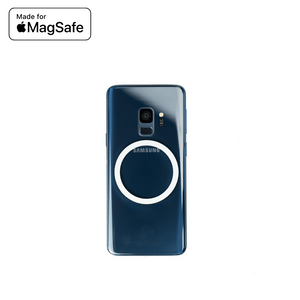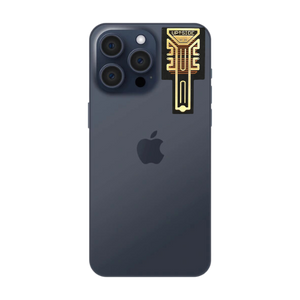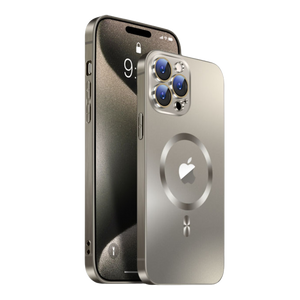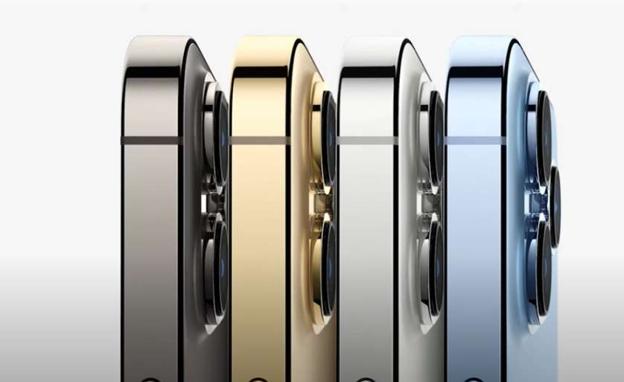
The iPhone 13 is here: this is what the new Apple smartphones are like
Compartir
The most advanced phones from the bitten apple can be reserved starting Friday
Faithful to its appointment every September, Apple has shown the next generation of its smartphone. The iPhone 13 will hit the market in four models identified by their screen diagonal: iPhone 13 mini (5.4 inches), iPhone 13 (6.1 inches), iPhone 13 Pro (6.1 inches) and iPhone 13 Pro Max ( 6.7 inches).
The design of the new terminals is very similar to that of their predecessors, with a flat screen almost devoid of frames and straight bezels. The only palpable change on the front is a capo that reduces its size for the first time since the iPhone
The OLED screen of the four models, for its part, reserves the main update for the Pro versions: a refresh rate of up to 120 hertz with a brightness of 1,000 nits that will allow unprecedented fluidity when browsing the Internet, playing multimedia content and especially run the most advanced video games on the App Store. Of course, it will be activated automatically with this type of content to save battery. Likewise, it is 28% brighter than the previous generation in the case of the base iPhone that gains HDR compatibility at 1200 nits, in addition to supporting Dolby Vision and HDR10 as if it were a high-end TV.
As for the internals of these iPhone 13, the new A15 Bionic chip promises unprecedented performance. In fact, it is claimed that the new processor is up to 50% faster than the previous generation, capable of making 15.8 billion calculations per second. It also has a larger battery taking advantage of the redesign inside and which promises to increase its autonomy by 1.5 hours in the case of the mini and 2.5 in the case of the iPhone 13. The same happens in the Pro and the Pro Max. All four phones are compatible with 25-watt fast charging (via MagSafe connector), are ready for the most advanced 5G networks thanks to a custom modem chip, and embrace the new WiFi 6 standard.
Cameras make a difference

The pros have three lenses.
Turning over the devices we find another differentiating sign between models: the cameras. While the iPhone 13 and iPhone 13 mini rely on two lenses arranged diagonally, their 'Pro' brothers maintain the triangular arrangement of the previous batch in their case protected with sapphire glass. The latter improve the response of the LiDAR scanner and the shooting conditions in low light situations, 50% more effective than the previous generation. In fact, it is now capable of photographing the celestial vault, which will delight astronomy fans.
And as a novelty, all the lenses have a night mode, including the wide-angle one that left a lot to be desired in dark environments. It also increases the optical zoom to three times and incorporates a new 'macro' capture mode for photographing close-ups of small objects such as insects or flowers. The processing of photos can be customized by the user themselves and calls for the arrival of the 'ProRes' function in 4K video recording for compression without loss of quality. Likewise, you can now blur the background of a video shot as with portrait photo mode. Even changing the focus in post-production in the case of the pros.
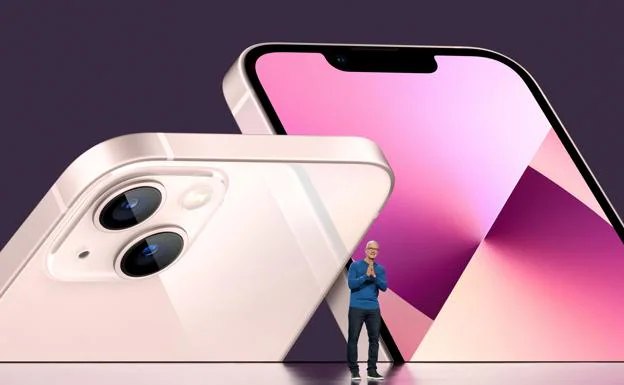
Apple CEO Tim Cook during the presentation of the new iPhones.
Reservations for the new iPhones open this Friday, September 17, and they are expected to reach the first buyers a week later. The surprise is found in the storage capacities offered, since we went from 64GB to 128GB in the base option. In addition, the two Pro are offered with up to 1TB internal space, according to their photographic qualities.
iPhone 13 mini and iPhone 13 start at 809 euros and 909 euros respectively, available in pink, blue, midnight, red and white. The iPhone 13 Pro and iPhone 13 Pro Max require a minimum outlay of 1,159 euros and 1,259 euros respectively, giving us the choice between black, bronze, silver and blue finishes.
Along with the iPhone 13 family, iOS 15 will arrive, the next version of Apple's operating system, which will remodel many of its native applications between other news that we reviewed last June.

